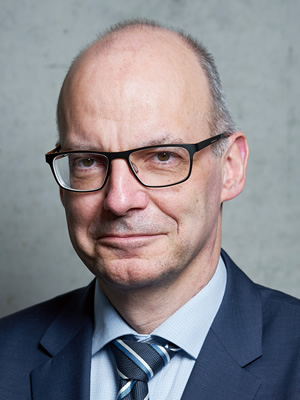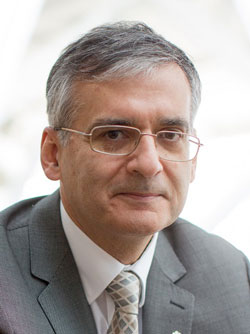
Professor, Center of Neurology Hertie Institute for Clinical Brain Research
Department of Neurology and Stroke, University of Tubingen
Tubingen, Germany

University Professor and Tasker Chair in Functional Neurosurgery
University of Toronto, Canada

Director, Noninvasive Neuromodulation Unit, Intramural Research Program
NIMH
Bethesda, USA
Welcome to the Brain Stimulation Special Interest Group (BS-SIG), formerly called the Non-Invasive Brain Stimulation SIG (NBS-SIG), founded in 2018. In order to further extend our membership interests, in late 2021, IFCN broadened the NBS-SIG’s original name to Brain Stimulation SIG (BS-SIG). Professor Andres Lozano and Professor Sarah Hollingsworth (Holly) Lisanby have kindly agreed to join Professor Professor Ulf Ziemann as Working Group Co-leaders of the SIG to extend the focus into neurosurgical and psychiatric topics.
In 2018, the Executive Committee of IFCN committed Prof. Yoshikazu Ugawa (Department of Neuro-regeneration, Fukushima Medical University, Japan) and Prof. Walter Paulus (Department of Clinical Neurophysiology, University of Göttingen, Germany) to lead activities of a new Special Interest Group (SIG) on non-invasive brain stimulation (NBS) techniques, such as transcranial magnetic stimulation (TMS), transcranial direct and alternating current stimulation (tDCS, tACS) as well as static magnetic stimulation, ultrasound stimulation and others, with in the beginning around 50 international experts for the development of new stimulation methods or new clinical application of NBS, and also the propaganda of established techniques of NBS (CMCT, SICI, SIF, SICF, CBI and others) in Clinical Neurophysiology. During the 31st International Congress of Clinical Neurophysiology (ICCN2018) held in Washington DC (USA, May 4, 2018), a small session of the SIG on NBS focused on the spinal cord plasticity induction methods. Two speakers gave presentations about spinal cord plasticity induction.
Activities & Accomplishments
Trapp NT, Purgianto A, Taylor JJ, Singh MK, Oberman LM, Mickey BJ, et al. Consensus review and considerations on TMS to treat depression: A comprehensive update endorsed by the National Network of Depression Centers, the Clinical TMS Society, and the International Federation of Clinical Neurophysiology. Clin Neurophysiol 2024;170:206-33.
Murphy, K.R., Nandi, T., Kop, B., Osada, T., Lueckel, M., N’Djin, W.A., Caulfield, K.A., Fomenko, A., Siebner, H.R., Ugawa, Y., Verhagen, L., Bestmann, S., Martin, E., Pauly, K.B., Fouragnan, E., Bergmann, T.O., A practical guide to transcranial ultrasonic stimulation from the IFCN-endorsed ITRUSST consortium, Clinical Neurophysiology (2025), doi: https://doi.org/10.1016/j.clinph.2025.01.004
If you are interested in joining the Brain Stimulation SIG, please email ulf.ziemann@uni-tuebingen.de, Andres.Lozano@uhn.ca, or sarah.lisanby@nih.gov